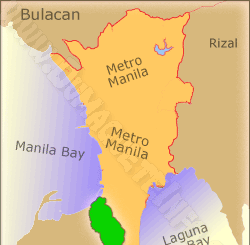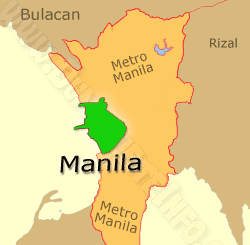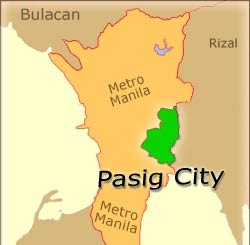DumagueteInfo Has Moved!
DumagueteInfo has a new home and you are viewing an archived article. Get the latest of what the new DumagueteInfo has to offer after reading this article. Thank you! Read more →
DumagueteInfo has a new home and you are viewing an archived article. Get the latest of what the new DumagueteInfo has to offer after reading this article. Thank you! Read more →
Redirecting you to our forums.
Read More

Pasay City One of the four cities that originally comprised Metro Manila, Pasay is the third smallest city in the National Capital Region with an area of only 1,900 hectares. It is adjacent to the City of Manila and is bordered by the Manila Bay to the west, Makati and Taguig cities to the northeast and Paranaque City to the south. Because of its close proximity to the City of Manila and access …
Read More

Las Piñas City One of the earliest settlements in the coastal fringes of the old Walled City of Manila, Las Piñas City is bounded on the south and southwest by the municipalities of Imus and Bacoor in Cavite; on the north and northeast by Parañaque City; on the east and southeast by Muntinlupa City; and, on the northwest by the Manila Bay. In 1775, this small fishing village was established into…
Read More

Muntinlupa What was once an agricultural town mostly devoted to cow pasture has metamorphosed into the new residential haven of Metro Manila. Muntinlupa is the southernmost city of Metro Manila bounded on the east by Laguna de Bay; on the southwest by the provinces of Laguna and Cavite; on the west by Las Piñas; on the northwest by Parañaque; and, on the north by Taguig City. Owing to its genera…
Read More

Manila Located on the eastern shore of Manila Bay, bisected right in the middle by the mighty Pasig River just west of Quezon City on the island of Luzon, Manila is the chief seaport and cultural center of the Philippines. This 3,855-hectare land is the country’s seat of political and administrative power as it is the home of Malacanang Palace, the official residence of the President of the Phili…
Read More

Mandaluyong Lying on a 2,600-hectare heart-shaped piece of land, Mandaluyong is located just seven kilometers southeast of the City of Manila and eight kilometers west of Pasig City. It is bordered to the northeast by Quezon City, to the south by Makati City and to the northwest by San Juan. In 1300 A.D., this place used to form part of the Kingdom of Sapa of the Majapahit Empire based in East J…
Read More

Quezon City: “Hollywood of the Philippines” Quezon City A sprawling land of 16,620 hectares of gently rolling hills straddling the Guadalupe plateau, Quezon City comprises the biggest portion of Metro Manila and is the second largest city in the country next to Davao City in Mindanao. It is bounded by the City of Manila on the southwest; Marikina and Pasig cities on the southeast; San Juan and M…
Read More

Pasig City Located on the southeastern tip of the great river of lore and legend after which it was named, Pasig City is bounded on the west by Mandaluyong City and Quezon City; on the east by the Municipality of Cainta; on the south by Makati City, Taguig City and Pateros; and, on the north by Marikina City. Bodies of water nurture life and civilization because it provides for man’s food and qu…
Read More

Parañaque A thriving city of 4,770 hectares located about 8 kilometers south of the City of Manila, Parañaque is bounded by Las Piñas City in the southwest, Muntinlupa City in the southeast, Pasay City in the north and Boulevard 2000 of the reclaimed area of Manila Bay in the west. Like many cities surrounding Manila, the history of Parañaque dates back to pre-Hispanic times when the early inh…
Read More

Marikina: The Shoe Capital of the Philippines A 2,150-hectare land located in a fertile valley bounded by mountain ranges and bisected by a river, Marikina is one of the five municipalities and twelve cities that comprise Metro Manila on the island of Luzon, the biggest island in the Philippines. It is about 21 kilometers from the heart of the City of Manila. It is bounded on the east by the Sier…
Read More